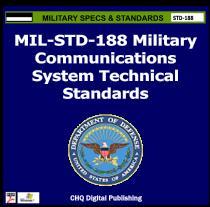Related Research Articles

Electromagnetic compatibility (EMC) is the ability of electrical equipment and systems to function acceptably in their electromagnetic environment, by limiting the unintentional generation, propagation and reception of electromagnetic energy which may cause unwanted effects such as electromagnetic interference (EMI) or even physical damage to operational equipment. The goal of EMC is the correct operation of different equipment in a common electromagnetic environment. It is also the name given to the associated branch of electrical engineering.
In Electrical systems, such as telecommunication, power electronics, industrial electronics, power engineering; electromagnetic interference (EMI) control is the control of radiated and conducted energy such that emissions that are unnecessary for system, subsystem, or equipment operation are reduced, minimized, or eliminated.

In telecommunication, especially radio communication, spread spectrum are techniques by which a signal generated with a particular bandwidth is deliberately spread in the frequency domain over a wider frequency band. Spread-spectrum techniques are used for the establishment of secure communications, increasing resistance to natural interference, noise, and jamming, to prevent detection, to limit power flux density, and to enable multiple-access communications.

MIL-STD-188 is a series of U.S. military standards relating to telecommunications.
Broadband over power lines (BPL) is a method of power-line communication (PLC) that allows relatively high-speed digital data transmission over public electric power distribution wiring. BPL uses higher frequencies, a wider frequency range, and different technologies compared to other forms of power-line communications to provide high-rate communication over longer distances. BPL uses frequencies that are part of the radio spectrum allocated to over-the-air communication services; therefore, the prevention of interference to, and from, these services is a very important factor in designing BPL systems.
MIL-STD-1553 is a military standard published by the United States Department of Defense that defines the mechanical, electrical, and functional characteristics of a serial data bus. It was originally designed as an avionic data bus for use with military avionics, but has also become commonly used in spacecraft on-board data handling (OBDH) subsystems, both military and civil, including use on the James Webb space telescope. It features multiple redundant balanced line physical layers, a (differential) network interface, time-division multiplexing, half-duplex command/response protocol, and can handle up to 31 Remote Terminals (devices); 32 is typically designated for broadcast messages. A version of MIL-STD-1553 using optical cabling in place of electrical is known as MIL-STD-1773.
A United States defense standard, often called a military standard, "MIL-STD", "MIL-SPEC", or (informally) "MilSpecs", is used to help achieve standardization objectives by the U.S. Department of Defense.
The Comité International Spécial des Perturbations Radioélectriques was founded in 1934 to set standards for controlling electromagnetic interference in electrical and electronic devices and is a part of the International Electrotechnical Commission (IEC).

MIL-STD-810, U.S. Department of Defense Test Method Standard, Environmental Engineering Considerations and Laboratory Tests, is a United States Military Standard that emphasizes tailoring an equipment's environmental design and test limits to the conditions that it will experience throughout its service life, and establishing chamber test methods that replicate the effects of environments on the equipment rather than imitating the environments themselves. Although prepared specifically for U.S. military applications, the standard is often applied for commercial products as well.
A rugged computer or ruggedized computer is a computer specifically designed to operate reliably in harsh usage environments and conditions, such as strong vibrations, extreme temperatures and wet or dusty conditions. They are designed from inception for the type of rough use typified by these conditions, not just in the external housing but in the internal components and cooling arrangements as well.

Naval Surface Warfare Center Crane Division is the principal tenant command located at Naval Support Activity Crane in Indiana.
In telecommunication, a measuring receiver or measurement receiver is a calibrated laboratory-grade radio receiver designed to measure the characteristics of radio signals. The parameters of such receivers can be adjusted over a much more comprehensive range of values than other radio receivers. Their circuitry is optimized for stability and enables calibration and reproducible results. Some measurement receivers also have exceptionally robust input circuits that can survive brief impulses of more than 1000 V, as they can occur during measurements of radio signals on power lines and other conductors.
Environmental testing is the measurement of the performance of equipment under specified environmental conditions, such as:

A line impedance stabilization network (LISN) is a device used in conducted and radiated radio-frequency emission and susceptibility tests, as specified in various electromagnetic compatibility (EMC)/EMI test standards.
This article specifically addresses U.S. armed forces military computers and their use.
The military standard referred to as MIL-E-7016F, Electric Load and Power Source Capacity, Aircraft, Analysis of" addresses the methods and analysis of electric loads and source capacity on military aircraft. The use of the document is approved for use by all departments and agencies of the United States Department of Defense (DoD). Although prepared specifically for DoD applications, the standard may be tailored for commercial applications as well.
A high-intensity radiated field (HIRF) is radio-frequency energy of a strength sufficient to adversely affect either a living organism or the performance of a device subjected to it. A microwave oven is an example of this principle put to controlled, safe use. Radio-frequency (RF) energy is non-ionizing electromagnetic radiation – its effects on tissue are through heating. Electronic components are affected via rectification of the RF and a corresponding shift in the bias points of the components in the field.

An ESD simulator, also known as an ESD gun, is a handheld unit used to test the immunity of devices to electrostatic discharge (ESD). These simulators are used in special electromagnetic compatibility (EMC) laboratories. ESD pulses are fast, high-voltage pulses created when two objects with different electrical charges come into close proximity or contact. Recreating them in a test environment helps to verify that the device under test is immune to static electricity discharges.
References
- ↑ "Requirements for the Control of Electromagnetic Interference Characteristics of Subsystems and Equipment"
- ↑ "MIL-STD-461G: REQUIREMENTS FOR THE CONTROL OF ELECTROMAGNETIC INTERFERENCE CHARACTERISTICS OF SUBSYSTEMS AND EQUIPMENT". ATEC Rentals.
- ↑ "MIL-STD-461 Testing" Archived 2012-02-20 at the Wayback Machine
- ↑ "Defense Standards"
- ↑ "Why is MIL-STD-461 an important COTS feature for our military?" Archived 2011-08-07 at the Wayback Machine